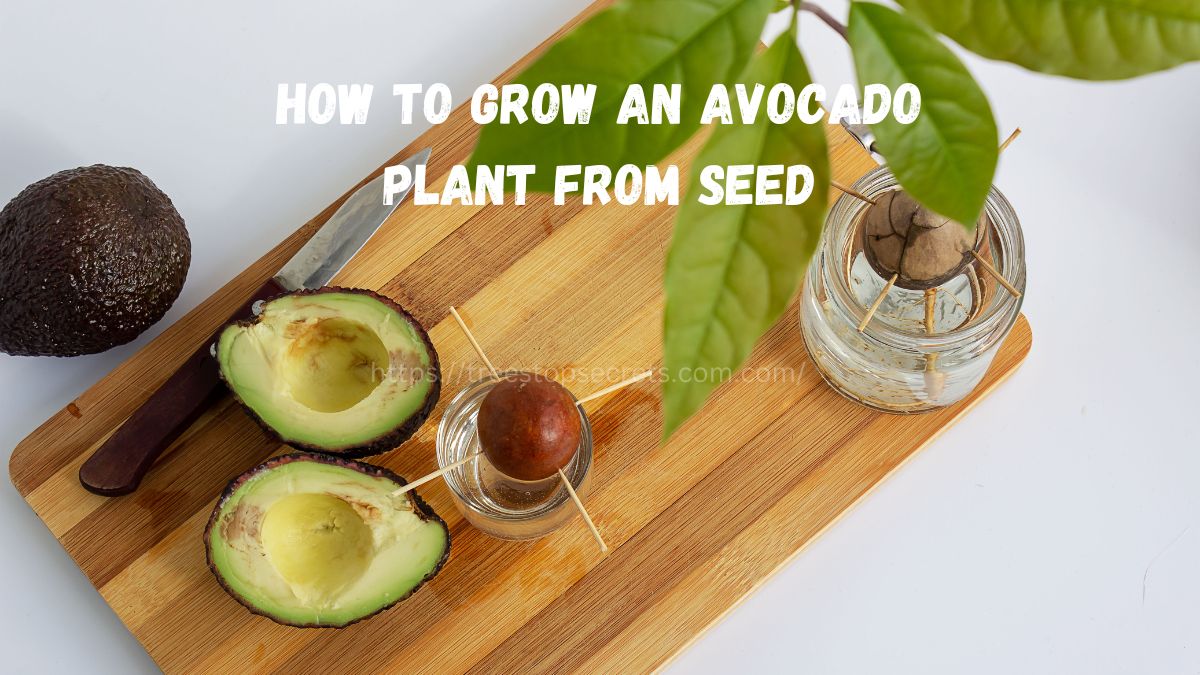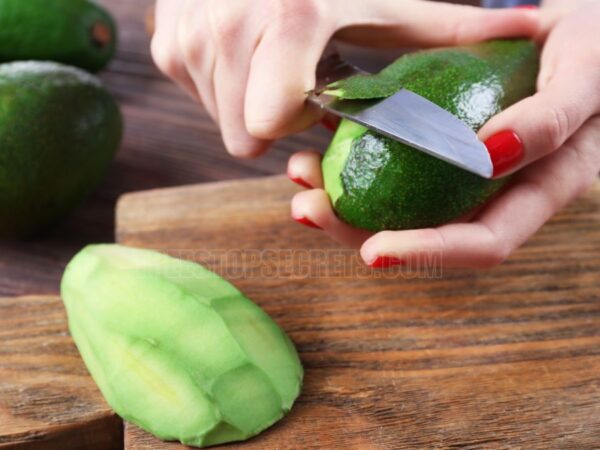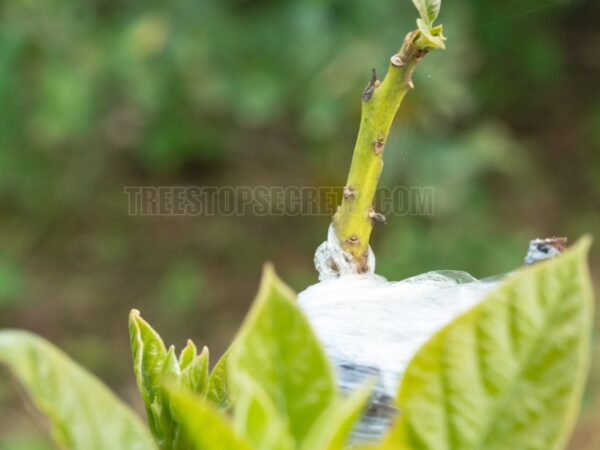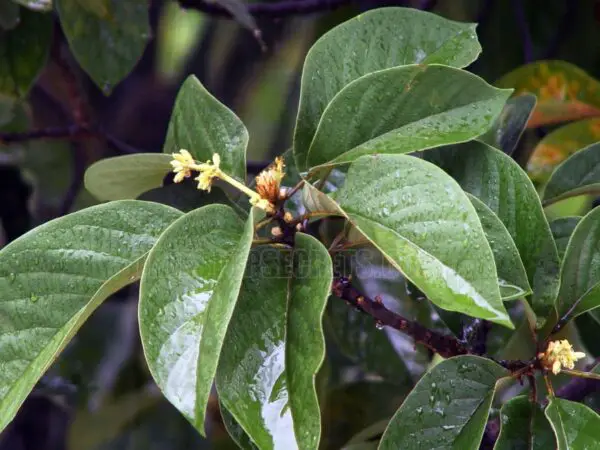Key Takeaways
- Collect basic materials such as pots, potting mix, and toothpicks to prepare for getting avocado seeds started right. A sunny windowsill will keep your seeds nice and toasty, providing this warmth that sprouting seeds long for.
- Select whole, clean seeds, ideally from larger avocados, to increase your odds of germination. Shoo away seeds of the moldy, squished, or otherwise destroyed variety to maximize your chances of sprouting success.
- Your future avocado plant needs a warm, humid environment with plenty of indirect sunlight. This environment will encourage strong, healthy growth and minimize any potential for disease.
- Stay on top of the germination process with techniques such as the toothpick method or wet towel method with avocado seeds. Change the water weekly and monitor the moisture levels to help promote sprouting.
- Once the seed has sprouted, remove it from the jar and pot it up in a larger pot with a well-draining potting mix. Ensure your pot has drainage holes to avoid root rot and encourage vigorous growth.
- Watch your avocado plant grow and change, watering and fertilizing as appropriate as it becomes more established. Prune your plant and keep an eye out for pests to maintain a thriving, healthy avocado plant.
Germinating an avocado seed isn’t terribly complicated, but it is uniquely rewarding.
Step 1: Choose a ripe avocado and remove the pit with care. Give it a light clean, then use toothpicks to suspend the pit in water. This technique encourages the roots to develop and keeps the seed mostly submerged.
In two to six weeks or so, you’ll notice roots and a stem begin to emerge. Once it has a sturdy stem of around 15 cm (6 inches), transfer it to a pot of soil. Keep it in a warm and sunny spot with enough water.
Caring for and watching your avocado plant thrive is a fun experience. You take a plain old brown seed and turn it into a cheerful leafy green houseplant. Here’s a closer look at each step to help make your avocado plant a happy one.
Required Materials
Here are the required materials and tools to effectively start an avocado plant from seed. Having the proper materials creates a good launching point for your new endeavor.
1. Gather Essential Tools
Start by collecting the following tools:
- Pots: Use small pots with drainage holes.
- Soil: A quality potting mix works best.
- Watering can: For easy watering.
- Toothpicks: These will help suspend the seed.
- Glass of water: For germination methods.
- Paper towels: Great for wrapping seeds.
When you’re sprouting, you can pick any sunny window or a warm area of your home. A place which gets 6+ hours of direct sunlight will provide your new seedling the advantage it needs to thrive.
2. Choose the Right Avocado Seed
Choosing the best seed to plant is an important decision. Choose fewer, larger and undamaged seeds for higher germination rates and healthier plants. Don’t use moldy or bruised seeds, which can greatly reduce their ability to germinate.
Hass avocados are the most common type but can be more difficult to sprout than other varieties.
3. Prepare the Growing Environment
Ensure you have a nice, warm, humid environment to help your seed germinate. Keep it in bright, but indirect sunlight, or risk burning the leaves. A clean environment is an important factor in keeping children safe from harmful pathogens.
To improve germination, you can soak the pits in warm water for a few hours before planting. This further breaks down the seed coat, allowing the taproot to break through after a few days, weeks at most.
Steps to Follow for Germination

It’s easy to germinate an avocado seed when you do it the right way. While this process can sometimes feel frustrating, nothing compares to successfully observing the seed grow into a vibrant and lush plant. Keeping a close eye on your seeds is the key to success. You want to address any potential problems right away while they are small.
Different techniques may yield varying results, so it’s worth experimenting to find what works best for you.
1. Use the Toothpick Method
- Simply discard the avocado pit, and wash the fruit well.
- Insert three toothpicks evenly around the seed's widest point.
- Hang the seed over a jar of water or other vessel such that the bottom part of the seed is submerged.
- Place this arrangement in a sunny window to promote germination.
- Regularly check the water level to keep it submerged.
2. Try the Wet Cloth Method
- Put the avocado seed in a damp paper towel, wrap it up tightly, and place it inside a plastic bag.
- Keep the baggie in a dark, warm area to encourage germination.
- Check the towel every few days to keep it moist, as it may take several weeks for shoots to emerge.
3. Prepare the Seed for Planting
- Be sure to cut the avocado safely and remove the pit in one piece.
- Wash it thoroughly to eliminate any possible pathogens.
- Removing the brown outer skin can enhance germination chances.
4. Monitor Root Development
- Watch for signs of root development, usually in just a few weeks.
- Wait until the taproot is well formed before moving it to soil.
- Maintain consistent conditions to support healthy root growth.
Planting the Sprouted Seed
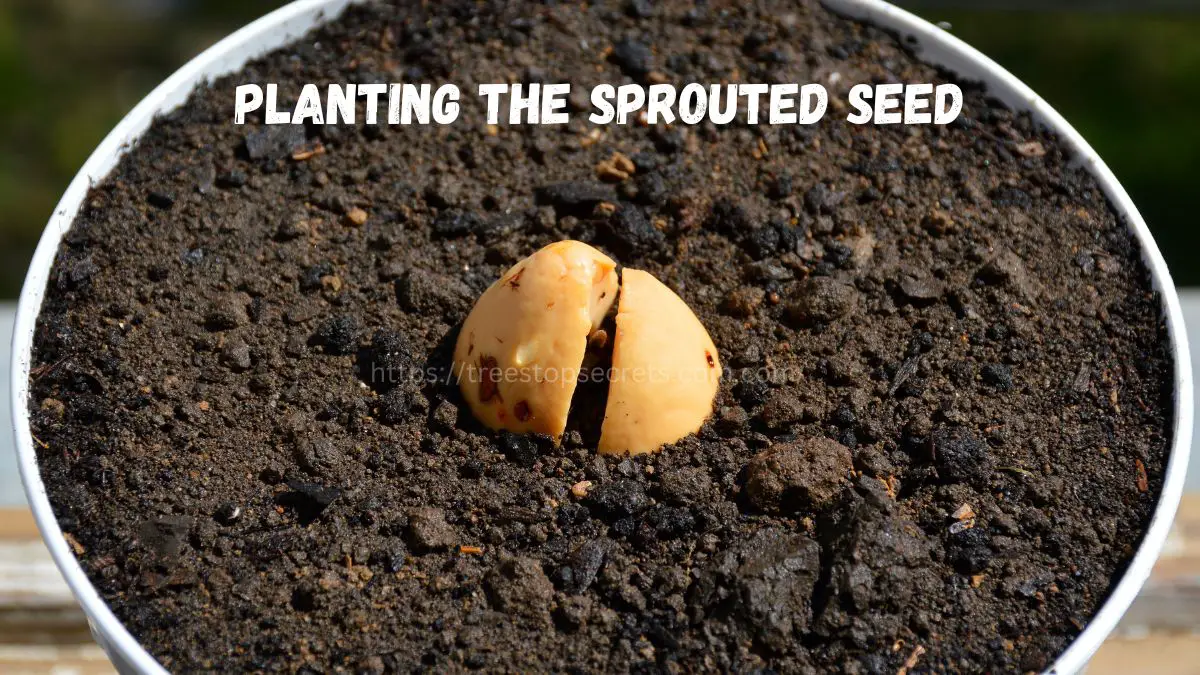
When your avocado seed develops roots that are around 3 inches long, it’s time for a repot. Time to prepare it for planting into a pot! This stage is important for the young seedling’s future health and vitality. Planting them in soil instead of water helps them thrive.
1. Select an Appropriate Pot
Picking the right pot is key to keeping your avocado plant healthy and happy. A pot with drainage holes is key for keeping your seedling from getting root rot. To start, the size should fit the growth stage of your seedling, giving them plenty of room to grow roots.
A minimum of a 6 to 8-inch pot is ideal at first, giving healthy growth room while not being too large for the tender new seedling.
2. Use Ideal Soil Composition
Plants do not thrive when grown in dense medium, so well-draining potting soil is essential to promote vigorous root development. Amending with materials such as peat moss or coconut coir increases aeration in the soil. This avoids compaction and encourages healthy root development.
Don’t select heavy, clayey soils that will hold too much water.
3. Ensure Proper Drainage
Making a drainage layer at the bottom of the pot using pebbles or gravel will allow excess water to drain. Keep an eye on soil moisture. Soil should be consistently moist but not waterlogged.
Position the point end of your seed above the soil surface. You should shoot for a final planting depth of 2 to 3 inches. Consistent fertilization promotes vigorous growth.
If you follow these instructions, your sprouted seed will have the best chance of growing into a healthy avocado tree.
Care for Your Avocado Plant

Proper care for your avocado plant will ensure that it grows healthy and strong. With smart practices, you can give your new plant the best shot at thriving. Making subtle changes to its watering and fertilization regimen according to what it needs as it grows up is key. Frequent inspection of its surroundings will ensure that the plant is kept in ideal conditions.
1. Watering Techniques and Frequency
Watering your avocado plant deeply but less often is important. This method prevents waterlogging, which can cause root rot. Let the first inch of soil dry out a little in between waterings.
Watch your plant – as a rule of thumb, when leaves begin to droop, you need to water. If the leaves start turning yellow, you could be watering too much.
2. Pruning for Healthy Growth
Pinching back the leaves of your avocado plant will help to promote bushier growth. When your plant is about one foot tall, pinch back the growing tips to encourage side shoots.
Before their active growth period in late winter or early spring, you may do more drastic pruning to help shape the plant. Trimming off any unsightly or unhealthy-looking leaves will improve overall health and attractiveness.
It makes new growth possible, too, by promoting overall health and diverting more energy to reproduce new growth.
3. Fertilization Strategies
Fertilizing your avocado tree should start only if your plant is over a year old. This ensures there is no nutrient burn. Apply a slow-release balanced fertilizer that includes key nutrients such as nitrogen, phosphorus and potassium.
Observe your plant’s reaction to that change carefully. If you observe poor growth or yellowing leaves, reduce fertilization and see to other cultural care needs.
Light and Temperature Needs

Knowing your avocado’s light and temperature needs are essential for fostering a healthy plant. These components affect not only the plant’s growth but the plant’s vitality and fruit-bearing capabilities. By delivering optimal conditions, you’ll set your avocado up for success and growth.
1. Optimal Light Conditions
First, start your avocado plant in an area that receives plenty of bright, indirect light. Bright direct light can be too harsh and burn the leaves, making a proper balance critical. Seek a spot within range of a window with filtered natural light.
It’s helpful to give your plant an occasional quarter turn every couple weeks. This helps to make sure that all angles get the same amount of light, encouraging even growth from all sides. Keep an eye out for signs that your plant is telling you it needs more light.
Watch for leggy growth and/or leaves that are drooping. If you see any of these symptoms, try giving it more light and see if it perks up.
2. Maintaining Ideal Temperature and Humidity
Second, temperature is an important aspect for the health of your avocado plant. Figuratively, shelter it in a warm place; 60-85°F is ideal. This range cultivates vigorous growth while avoiding stressful conditions that could harm the plant.
If your home is dry, keeping humidity is necessary. Fill a shallow dish with pebbles and water, and put it next to the plant. Or, regularly mist your plant’s leaves to increase humidity.
This increase in moisture is essential to re-creating the plant’s native tropical habitat, triggering strong and powerful growth.
Monitoring Growth Progress
Keeping track of your avocado plant’s growth progress will keep it healthy and allow it to thrive for years to come. By monitoring every phase, you can make sure that your plant is getting the proper treatment at all times. Recognizing these major milestones allows you to change your tactics. Making these issues known sooner can save a lot of trouble and money later in the process.
1. Recognizing Growth Stages
To better understand growth progress, begin with the natural seedling life cycle as your sprout develops into a full-fledged plant. In the spring, you can watch the first leaves unfurl, the first rudimentary solar panels that will capture energy to keep the tree growing.
After planting, continued leaf and stem growth is a visual cue to the plant’s health and vitality. It can be helpful to maintain a straightforward journal of these developments. For example, record the date you first notice new leaves or how many inches the plant grows per week.
This record not only informs you about the plant's progress but helps in making better care decisions in the future.
2. Identifying Common Issues
Watch for other signs that you’re on dangerous ground. Whether it’s overwatering, underwatering, or a full-blown pest party, unexpected issues can quickly set your plant back.
Monitor your plants closely, especially for leaf discoloration or wilting, which is frequently the first indication that something is wrong. If you see yellowing leaves, that can be a sign that you’re watering too much.
Take action immediately by changing your watering habits or checking plants to see if they have harmful pests. Tackling these problems early on uproots potential doom and keeps your avocado plant happy and continuing on its growth path.
Troubleshooting Common Pitfalls
Trying to grow an avocado plant from seed can be fun and fulfilling, but it doesn’t have to be frustrating! Learning about these typical pitfalls and how to address them can turn the tide from failure to success.
1. Addressing Germination Failures
Germination failures may be caused by one or a combination of numerous factors. Never forget to start by checking the quality of the seeds. Using healthy, clean seed of known provenance gives you your best shot at a successful sowing.
Environmental conditions and the world outside of school contribute as well. If your seed still isn’t sprouting, see if it’s too desiccated or frostbitten. If you are finding problems, change your approach.
For example, putting the seed in a warm, sunny location helps get things going. Change it up with your plantings! Soak the seed in water prior to planting, or use alternative mediums like water or soil to germinate.
2. Remedies for Nutrient Deficiencies
If your indoor avocado plant is starting to turn yellow or not growing very fast, it could be a nutrient deficiency. Start by looking at your fertilization practice. A balanced organic fertilizer will do the trick.
Using organic compost improves the soil and yields richer nutrients. By fostering plant health through this preventative approach, you’re creating healthy soil for the next generation of plants to thrive in.
3. Managing Pest Problems
As you can tell, frequent inspection of your avocado plant’s stem is very important. Check under leaves for evidence of pests such as aphids or spider mites.
If you can catch them early, try applying natural pest control options such as neem oil or insecticidal soap to save your plant. Regular sanitation in and around the plant base will prevent the pest and make a plant’s environment more favorable to discourage infestations.
Advantages of Growing from Seed
More than just an exciting project, growing an avocado plant from seed has incredible benefits that help you enjoy gardening to the fullest. It really isn’t so much the plant; it’s this beautiful experience of caring for something and witnessing life grow.
1. Benefits of Seed Propagation
Watching your avocado grow from seed to maturity gives you a well-deserved boost of pride. You watch as the first little sprout breaks through the soil. After germination, all you can do is admire the beauty of those bright green leaves opening up.
Seed-grown avocado trees can have interesting characteristics. Each tree features unique leaf shapes and growth patterns, making them little masterpieces in their own right. Not to mention, this is a great, money-saving method.
Don’t bother with that pricey grafted avocado plant either. Instead, get started with a seed from your very own kitchen! This provides you with an affordable option, but lets you keep the excitement of growing your tree yourself.
2. Comparing Seed Growth to Grafting
It’s important to know how growing from seed differs from grafting. Tropical Seed Grafted avocado trees usually start producing fruit within three years. Seed-grown trees take five to thirteen years to produce fruit.
Seed-grown trees are more accustomed to local conditions and are often hardier. Determining what you want is the most important step. If you are in a rush for fruit, grafting may be the way to go.
If you love the journey of growing things, growing from seed is an incredibly rewarding option. It grants you the ability to grow a tangible representation of your dedication and hard work.
Essential Growing Tips from Experts
Starting an avocado plant from seed is a fun and rewarding experience, but these tips from the pros will help you achieve success even sooner. By taking their advice, you’ll ensure your growing operation is establishing your plant for long-term health and productivity.
1. Best Practices for Long-Term Health
Developing a routine of regular, daily care is essential. For all the avocado plants indoors or outdoors, check the soil often and water your avocado plant when the first inch of soil becomes dry. This equilibrium stops the plant from getting root rot while ensuring the plant stays watered.
Change your approach according to the time of year. During the winter, your plant’s watering needs and lighting needs will change. Keep an eye out for typical problems such as insects or premature leaf drop.
Be on the lookout for any signs of distress and address them quickly so your plant stays happy and thriving.
2. Techniques for Optimal Yields
To keep fruit production at its peak, proper pruning and fertilization practices are essential. Prune out any dead or crowded limbs to allow for better air flow and sunlight to reach the inner canopy.
You can use a balanced fertilizer every few months to ensure all necessary nutrients are supplied. Pay attention to your plant’s surroundings as well. Place it in a warm area with lots of indirect light, since avocado plants love bright, indirect light.
By trying out new ways to care for them, they can really surprise you. Take for instance the growers who are achieving great results with organic compost rather than chemical fertilizers, producing hardier plants in the process.
Conclusion
Watching your avocado plant grow from seed is fun, educational, and rewarding. Plus, it’s an exciting opportunity to witness that little seed transform into a beautiful, living plant right in your own home. The process itself is easy: germination, planting, and tending to the plant. Each step has its own enjoyment to be found. You learn, you grow, you build community and relationships with nature, and you take home a little slice of the tropics.
The secret to keeping your plant healthy lies primarily in warm, bright sunlight. Keep a close eye on its growth, and be quick to address any problems that arise. Keep in mind that the fun of growing an avocado plant is the experience, not the fruit it might produce. Take your avocado project on today, and reap the rewards of growing at home. Your future specimen is waiting for you!
Frequently Asked Questions
How long does it take to grow an avocado plant from seed?
Germination usually takes 2 to 6 weeks. Once sprouted, the plant requires few years of care before it reaches maturity and bears fruit.
Can I grow an avocado plant indoors?
Yes, avocado plants can grow in pots inside. From there, make sure they get plenty of natural light and keep them in a generally warm space so they thrive and grow properly.
How often should I water my avocado plant?
Water your avocado plant when the top inch or so of soil is dry. Once a week is usually enough, but pay attention to your plant and its environment to get a good sense of how often you should be watering.
When should I transplant my avocado plant?
When your avocado plant is about 6 inches tall with a few leaves, transplant it into a pot of soil. This is typically 3-4 months after sprouting.
What type of soil is best for avocado plants?
Plant them in a clean container with well-draining potting soil that will hold some moisture. A cactus or succulent potting mix is a good option for growing avocado plants.
Do I need to fertilize my avocado plant?
Short answer, yes, fertilizing your avocado plant ensures abundant growth.
Fertilizing Use a balanced, slow-release fertilizer when the plant is actively growing, about every 4 to 6 weeks.
Why is my avocado plant not growing?
First, lack of sunlight, improper watering, or poor soil quality may not be enough to grow a healthy plant. Give your plant the right amount of light and care so it can grow up healthy and strong.
Image Source: Paid image from CANVA

